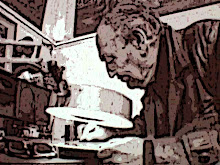sábado, 24 de septiembre de 2022
sábado, 9 de julio de 2022
MUSEO MURAL DIEGO RIVERA ROSTROS Y RETRATOS EXPRESIONES EN VOLÚMEN
Monumento a la Madre
CYDT Collection
Luis Ortiz Monasterio (August 23, 1906 in Mexico City – February 16, 1990 in Mexico City) was a Mexican sculptor noted for his monumental works such as the Monumento a la Madre and the Nezahualcoyotl Fountain in Chapultepec Park. His work was recognized in 1967 with the Premio Nacional de Artes and was a founding member of the Academia de Artes.
Luis Ortiz Monasterio (full name Luis Ortiz Monasterio del Campillo) was born in Mexico City, losing his father the year he was born.
In 1920, he spent a year at a teacher’s training course at the Escuela Normal para Maestros while studying drawing at night at the Academy of San Carlos. He later registered as a matriculated student, specializing in engraving, drawing and sculpture.
Because of the family’s economic situation, he went to Los Angeles, where he worked and studied, coming into contact with the works of Auguste Rodin, Brâncuși and Wilhelm Lehmbruck. In 1927, he participated in a workshop at the Escuela Libre de Escultura y Talla Directa founded by Guillermo Ruiz at the San Ildefonso College, which promoted sculpting Mexican themes and values into native rock.
For the next several years, he lived in the United States and Mexico, before permanently settling in Mexico City. In addition to art, he was an author of books and monographs, which generally contained philosophic and poetic references.
Ortiz Monasterio retired from his sculpting career in 1989, dying a year later at the age of 83 in Mexico City from multiple natural causes. His body was cremated at the Panteón de Dolores in Mexico City
With a career that spanned over sixty years, Ortiz Monasterio is one of the main figures of Mexican sculpture in the 20th century. He is one of few to be active during the dominance of the Mexican muralism movement and one of fewer of the century to be remembered.
The artist began his career in 1927 as a drawing teacher at the Escuela de Maestros Contructores of the Secretaría de Educación Pública, after returned from studies in the United States. He went on to be a long-time teacher of the Escuela Nacional de Artes Plásticas ENAP from 1939 to 1962 and taught at La Esmeralda as well
His success in United States brought him back to Mexico, receiving commissions for monumental works.
the Monumento a la Madre in Parque Sullivan (1948) the Nezahualcoyotl Fountain in Chapultepec Park, the pórtico for the open air theater of the Plaza Cívica of the Unidad Independencia house complex and the Tigres y Águilas sculpture at the Centro Medico Nacional of IMSS(1963). He also created sculptures for cities such as Xalapa and Acapulco.
The first award for his work was a prize in sculpture from the Secretaría de Educación Pública in 1946. In 1967 he received the Premio Nacional de Artes in sculpture. In 1968 he was a founding member of the Academia de Artes and later received a diploma and medal for his teaching career at ENAP.[Posthumous tributes include one in 1992 at the OMR Gallery, and a retrospective in 2009 Museo de Linares And 2011 at the Museo Casa Estudio Diego Rivera y Frida Kahlo.
El Museo Mural Diego Rivera del Instituto Nacional de Bellas Artes albergará la exposición Rostros y retratos: expresiones en volumen, curada por María Estela Duarte, la cual podrá ser visitada del 6 de abril al 7 de agosto
Con un marco temporal que abarca desde la segunda mitad del siglo XIX hasta la actualidad, la muestra reúne más de 120 esculturas de 70 autores, entre quienes se encuentran 46 artistas nacionales.
Bo
Copyright © 2022 Arch documental CYDT
miércoles, 13 de abril de 2022
Museo Mural Diego Rivera
Dentro de este contexto , la Coleccion de Arte Cantú Y de Teresa y El Museo casa Estudio Federico & Elsa presentan cuatro obras icónicas de la Escuela Mexicana de Escultura y talla directa que forman parte de dichos acervos
Ejemplo de ello es la maqueta en bronce de lo que alguna vez fuera el Monumento a la Madre de Luis Ortiz Monasterio y que desapareciera parcialmente a partir del temblor del 2017 , tambien y enriqueciendo esta visión de la mexicanidad se encuentra la firma monograma “ autorretrato como
escultor de Federico Cantú; escultura en bronce que muestra la firma del mural “enseñanzas de Quetzalcóatl” IMSS Centro Medico, mural que tambien sufriera daños en el temblor de 1995 , de ahí a que la importancia de dichas obras son el testimonio de una época de la monumentalidad en Mexico y sin duda Narran la maestria de estos dos coloso del arte nacional.
Adolfo Cantú










